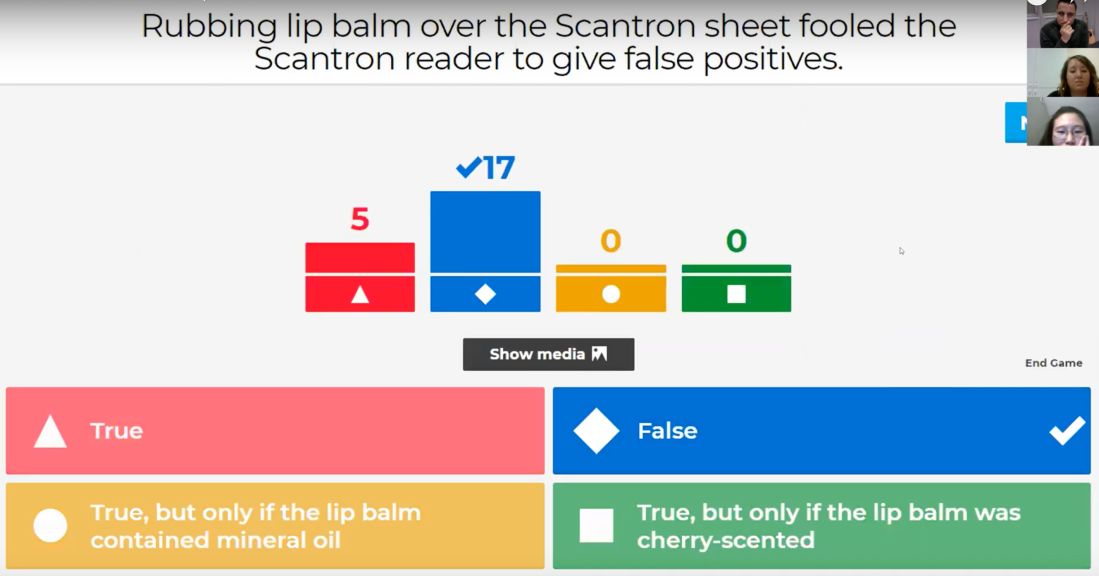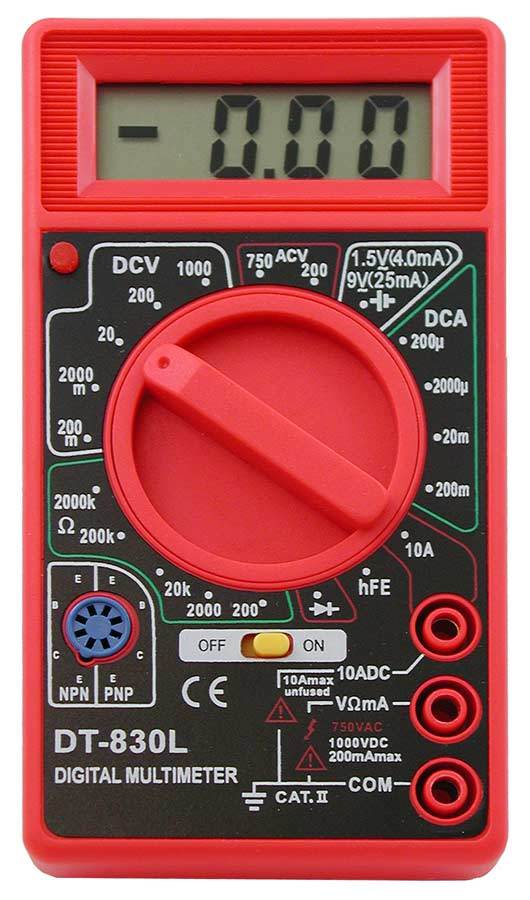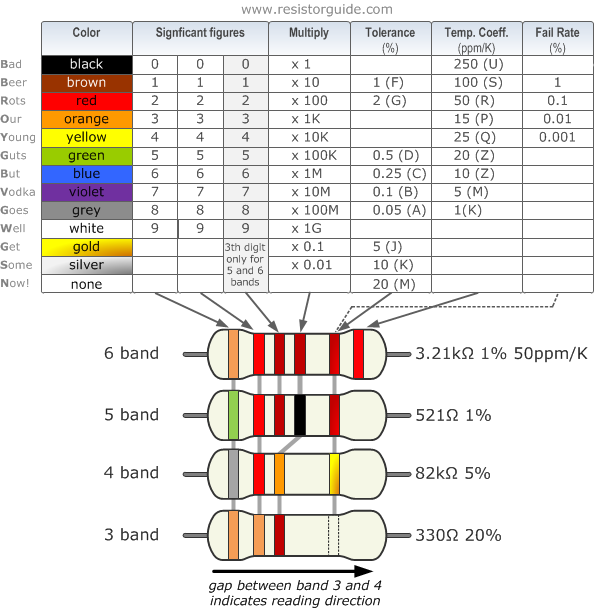I’m colour-blind. Although this is a minor disability, it has affected me quite often throughout my childhood and even today as an adult. One can take for granted the use of colours in the world we live. Here are a few examples that can lead to frustration for colour-blind people on a daily basis:
- Traffic lights
- Colour coded systems in books and activities
- Using colours to divide teams in sports
- Using colours in art (I hated when teachers asked me to colour my art as I didn’t have the ability to pick proper colour combinations and always had people commenting on how bizarre it was that I chose certain colours.)
- Choosing clothes to wear every morning (I’ve received many comments on my “interesting colour combinations”)
- Cooking food (Make sure to check the colour of the meat for doneness)
- Measuring pH as a science teacher using colour pH strips
- Identifying minerals and rocks when teaching Earth Science 30.
- Using colour codes when working on electronics (resistor codes are based on colours)
- Fixing my car/home wiring
- Making puzzles
- Describing and object and being asked what colour it is.
- Purchasing furniture or objects where colours is key.
- Painting walls.
- Cleaning certain things.
- Constantly being asked what colour things are because people know you’re colour-bling. (Nothing is more stressful and anxiety inducing.)
As one can attest, we use colour every day in hundreds of ways. Experienced colour-blind people are almost totally unnoticeable in society due to learning tricks and using certain technologies to adapt and make sure their disability doesn’t become an inability to function. In this post, I’ll be sharing a few of my experiences with my disability and how I’ve used this experience to help some of my students who are also colour-blind in my classroom and school. Some of these technologies are very simple and, in many cases obvious, but we must be careful not to ignore simple solutions in terms of accessibility. Solutions and tools can be everywhere, and we must keep our mind open to new solutions that aren’t necessarily high-tech software and hardware solutions.
Situation #1
Colour coded activities and learning resources. Many teachers use colour codes when teaching grammar and writing structure. Colours can also be used separate students in groups, mark sections in an assignment or even be used as a formative assessment tool. Imagine a student knowing certain answers but having to result in guessing the right colour as they cannot distinguish the right answer. An excellent example of how to go about solving this problem is the use of shapes and symbols in conjunction with colour. Providing an alternative makes the activity more inclusive to all students. An excellent example of this method what presented by the team of Mélanie, Sage, Sonja and Justin during their presentation on assessment technologies. Using Kahoot, they posed a question to the group and displayed on the screen were colour coded answers linked to a chart of results that was also colour coded. Linked with each colour was a shape which I really appreciated as it allowed me to confirm the link between my answer and the displayed result. This was a great example of using an assistive technology in a simple yet effective manner.

Situation #2
Traffic lights. Traffic lights are built in such a way that the coloured lights are always in the same order. When the lights are vertical, red is always at the top, yellow is always in the middle and green is always at the bottom. When traffic lights are in a horizontal configuration, the red light is always on the left, the yellow light is in the middle and the green light is on the right. Of course, this situation doesn’t present itself often in the classroom, but I’ve met many teachers who use traffic light images or traffic light analogies as tools to teach certain concepts in the classroom. On occasion, I’ve seen handmade posters of traffic lights on classroom walls that were incorrect to the standard. Although this is a small detail in the eyes of a person who is not colour-blind, it can be a large source of stress and frustration for a student who suffers from colour-blindness. Imaging how a student feels when he or she knows how to answer but simply cannot get it right due to not being able to pick the right colour. By observing the standards of traffic lights and being consistent, the traffic light analogy can still be used in the classroom by everyone, as longs as the colour-blind students know of the standard and it is applied properly.

Situation #3
Cooking class. Nothing is more frustration than trying to cook a steak for guests on a beautiful summer day and trying to see if a steak is rare (red), medium (pink) or well done (grayish?). This is only one example where colour is used in the world of cooking. I’ve had students express their frustration while attending cooking class as they felt like they would never be able to gain the skills required to excel in the kitchen. Let’s also underline the safety factor in consuming unproperly prepared foods.
In this situation, science and technology come to the rescue as assistive technologies. Thermometers (especially electronic thermometers) are becoming the tool of choice in judging the doneness of meats and many other food items. Over the past few years, their low cost and their ubiquitous availability has made their use almost universal in most home and commercial kitchens. Most renowned chefs now encourage people to abandon the use of colour in judging food preparation in favour of thermometers as they are more accurate and increase the safety factor in cooking. In addition to thermometers, using mass/temperature/time charts can also be used to help all students. The kitchen in my school uses electronic scales on a daily basis to measure the mass of certain ingredients which allows students to determine the temperature and the time needed to cook things by using a variety of standard charts.


Once again, these are not high-tech solutions in the world of assistive technologies but are another example of technologies that can help everyone and make the world a better and more inclusive place.
Situation #4
Teaching electronics and learning resistor colour codes. The Saskatchewan Grade 9 curriculum has a unit on electricity and in this unit, colours are often used to distinguish parts of a circuit and in certain situations electronic components such as resistors. As resistors can be quite small, writing their values on the component itself would not work, as a result, colour codes are used as a way to identify their resistance value. Students and teachers who are colour-bling are at a big disadvantage. In my amateur radio class, we were even requited to memorise resistor colour code despite the fact that I could never use this concept in the real world. To overcome this situation, I purchased very inexpensive digital multimeters, around 10$ each, as a way for students to measure the actual value of the component without having to guess using colour codes.

This technology has an additional benefit that it allows us to more completely and thoroughly analyse circuits using actual numerical data which removes ambiguity for everyone involved. In addition, the kids love using electronic test equipment! In the past few years, inexpensive component analyzers have become available through internet resellers directly from China. These fantastic little tools allow students to test electronic components within seconds and verify their type and their values. Once again, technology provides a level playing field for those who don’t have perfect colour vision.


Conclusions
I remember being in elementary school as a colour-blind student and having large amounts of stress associated with art projects. I guarded my coloured pencil crayons with vigilance as the shared crayons provided by the teacher often didn’t have the name of the colour on the pencil. Some students sharpened the pencils from the end where the colour was identified and with wax crayons, the paper wrappers that had the name of the colour was often removed and lost. I cannot convey the stress associated with trying to find a colour and not knowing if it even was available in front of me due to unavailable labeling.
Assistive technologies are fantastic, and many people rely on them with many people not even noticing their importance. I urge every teacher to keep in mind my experiences when considering activities and tools for learning. I acknowledge that many students have much more severe needs than the examples I have provided related to colour-blindness, but we must not ignore mild and light needs related to assistive technologies. For the well-being of everyone we must remain attentive to the needs of all students and recognise that adaptive technologies can assist students that don’t need them and provide and richer learning experience in each case.
Thank you for this powerful post! There is so much going on here, I hardly know where to start!
“One can take for granted the use of colours in the world we live.”
– Oh, absolutely. You’ve totally flipped the script on me there. I have said the same thing before with regards to programming for students and their challenges with literacy (reading text). I can’t say I’ve put very much thought what it would be like to live without seeing the colours I do.
“I remember being in elementary school as a colour-blind student and having large amounts of stress associated with art projects.”
-I can only imagine! A kind of stress that, again, is very easy to overlook…
Thanks Daniel! Your own experiences undoubtedly make you a fantastic fit for students coming through your classrooms with needs and challenges of their own.
Thank you for sharing your own struggles in your educational career. Before learning about assistive technologies and reading your post, I never would have considered how much someone with color-blindness would have to struggle. This has really made me think about my own students and how I would use assistive technologies within my own classroom. Whatever needs students have, big or small, we as educators need to be able to adapt to assist them in their learning.
I echo the comments made by Sonja and Joe! Great post. It was really interesting to read about your personal experiences with colour-blindness. I honestly had never given much consideration to any of the examples that you provided, but especially the traffic lights scenario. The idea of colour-blindness affecting one’s safety and others is really a testament to how important it is to make adaptations and provide assistive technologies to all people, regardless of their disability.
Thank you for sharing your personal experience! I never thought how shapes along with colours could make a meaningful difference in someone’s life. Great post!
Thank you very much for posting this.
I as a Deuteranopia colorblind person have realy enjoyed your post. And im seeing alot of things I have gone through during my school days. And even in my day to day life, job and even somthing as simple as playing a boardgame…. im hoping there will be a change in how ‘Normal visioned persons’ Can see how we experience the world around us. There once was a time when mobility impaired persons had difficulty with something easy as going from a to b… they are now given alot of help (wheelchair ramps , seating for diabled (in public transport), sounds at traffic lights, etc.)
Maybe it is time for the next step and try and make the world more accessible for everyone. Even the ones Who are colorblind. …
Kind Regards. Richard, the Netherlands 😊
Thank you for writing this piece! I love that you are writing both as a teacher and as someone who is colour blind. All teachers should be encouraged to read this piece! Accommodating colour blind students can be simple and cheap, but requires thoughtfulness. It startles me how many teachers “have never taught a child who was colour blind before”. 8% of the male population is affected. They have very likely taught one each year, but just not realized it. The sad thing is, these children generally are not formally diagnosed as colour vision screening is not among pre-school recommendations from the Canadian Paediatric Society. These children are literally forced to manage their incongruencies unaided, and without an appreciable understanding of themselves. This translates to an anxious child with low self-esteem, as they incorrectly believe colour is something that can be learned and they just aren’t “good learners”. What an unfortunate way to be turned off of learning at a very young age.
I thought you would be interested in this! Perhaps you are already aware? Do you know of any Atlas manufacturers? https://www.maptrove.ca/colour-blind-friendly-political-wall-map-of-the-world.html